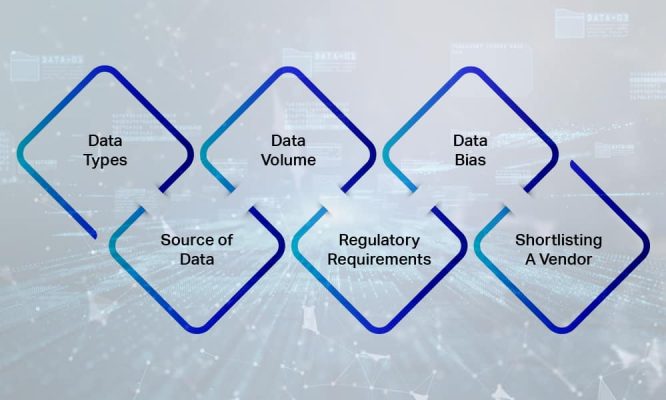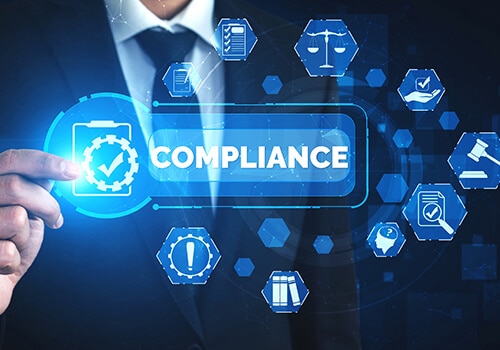The process of collecting AI training data is both inevitable and challenging. There is no way we could skip this part and directly get to the point our model starts churning out meaningful results (or results in the first place). It is systematic and interconnected.
As the purposes and use cases of contemporary AI (Artificial Intelligence) solutions become more niche, there is an increased demand for refined AI training data. With companies and startups venturing out into newer territories and market segments, they begin to operate in spaces unexplored previously. This makes AI data collection all the more intricate and tedious.
While the path ahead is definitely daunting, it could be simplified with a strategic approach. With a well-charted plan, you can streamline your AI data collection process and make it simple for everyone involved. All you have to do is get clarity on your requirements and answer a few questions.
What are they? Let’s find out.
The Quintessential AI Training Data Collection Guideline
What Data Do You Need?
This is the first question you need to answer to compile meaningful datasets and build a rewarding AI model. The type of data you need depends on the real-world problem you intend to solve.

If you’re developing a chatbot for a fintech solution, you require text-based data with a good mix of contexts, semantics, sarcasm, grammatical syntax, punctuations, and more.
Sometimes, you might also need a blend of multiple types of data based on the concern you solve and how you solve it. For instance, an AI model for an IoT system tracking equipment health would require images and footage from computer vision to detect malfunctioning and use historical data such as text, stats, and timelines to process them together and accurately predict results.
-
What Is Your Data Source?
ML data sourcing is tricky and complicated. This directly impacts the results your models will deliver in the future and care has to be taken at this point to establish well-defined data sources and touchpoints.
To get started with data sourcing, you could look for internal data generation touchpoints. These data sources are defined by your business and for your business. Meaning, they are relevant to your use case.
If you don’t have an internal resource or if you need additional data sources, you could check out free resources like archives, public datasets, search engines, and more. Apart from these sources, you also have data vendors, who can source your required data and deliver it to you completely annotated.
When you decide on your data source, consider the fact that you would be needing volumes after volumes of data in the long run and most datasets are unstructured, they are raw and all over the place.
To avoid such issues, most businesses usually source their datasets from vendors, who deliver machine-ready files that are precisely labeled by industry-specific SMEs.
-
How Much? – Volume Of Data Do You Need?
Let’s extend the last pointer a little more. Your AI model will be optimized for accurate results only when it is consistently trained with more volume of contextual datasets. This means that you are going to require a massive volume of data. As far as AI training data is concerned, there is no such thing as too much data.
So, there is no cap as such but if you really have to decide on the volume of data you need, you can use the budget as a decisive factor. AI training budget is a different ball game altogether and we’ve extensively covered the topic here. You could check it out and get an idea of how to approach and balance data volume and expenditure.
-
Data Collection Regulatory Requirements
If you are sourcing your data from vendors, look out for similar compliances as well. At no point should a customer’s or user’s sensitive information be compromised. The data should be de-identified before it is fed into machine learning models.
-
Handling Data Bias
Data bias can slowly kill your AI model. Consider it a slow poison that only gets detected with time. Bias creeps in from involuntary and mysterious sources and can easily skip the radar. When your AI training data is biased, your results are skewed and are often one-sided.
To avoid such instances, ensure the data you collect is as diverse as possible. For instance, if you’re collecting speech datasets, include datasets from multiple ethnicities, genders, age groups, cultures, accents, and more to accommodate the diverse types of people who would end up using your services. The richer and more diverse your data, the less biased it is likely to be.
-
Choosing The Right Data Collection Vendor
Once you choose to outsource your data collection, you first need to decide whom to outsource. The right data collection vendor has a solid portfolio, a transparent collaboration process, and offers scalable services. The perfect fit is also the one that ethically sources AI training data and ensures every single compliance is adhered to. A process that is time-consuming could end up prolonging your AI development process if you choose to collaborate with the wrong vendor.
So, look at their previous works, check if they have worked on the industry or market segment you are going to venture into, assess their commitment, and get paid samples to find out if the vendor is an ideal partner for your AI ambitions. Repeat the process until you find the right one.
Wrapping Up
AI data collection boils down to these questions and when you have these pointers sorted, you could be sure of the fact that your AI model will shape up the way you wanted it to. Just don’t make hasty decisions. It takes years to develop the ideal AI model but only minutes to fetch criticism on it. Avoid these by using our guidelines.
Good luck!




